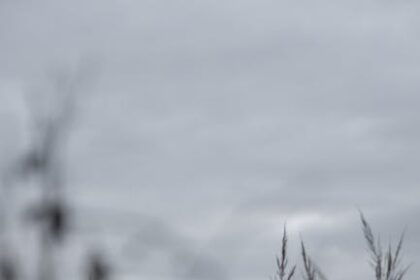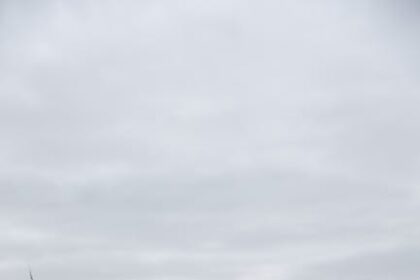Creative Strategies for TikTok Ad Success
Navigating the nuanced landscape of TikTok advertising demands a profound understanding of its distinct ecosystem, user behavior, and the underlying algorithmic principles that govern content discovery. Unlike traditional digital advertising platforms, TikTok thrives on authenticity, raw creativity, and a rapid consumption cycle driven by the “For You” page (FYP). Success on this platform is less about polished, high-budget productions and more about relatable, engaging narratives that seamlessly blend with organic user-generated content (UGC). A strategic approach to ad creative on TikTok hinges on mirroring the platform’s native feel, leveraging its unique features, and understanding the fleeting nature of user attention. The core objective is to stop the scroll within the first 1-3 seconds, deliver a compelling message, and drive a desired action, all while feeling less like an advertisement and more like an entertaining or informative piece of content. This requires a complete re-evaluation of traditional creative processes, embracing experimentation, and prioritizing rapid iteration based on real-time performance data. The power of sound, the immediacy of visual storytelling, and the cultural relevance of trends all play critical roles in shaping ad creative that resonates deeply with TikTok’s diverse and highly engaged audience.
Understanding the TikTok Algorithm and User Behavior
At the heart of TikTok’s unparalleled engagement lies its sophisticated recommendation algorithm, which is remarkably adept at understanding individual user preferences and serving hyper-personalized content on the “For You” page. For advertisers, this means that successful ad creatives must not only capture attention but also signal positive engagement metrics to the algorithm, encouraging wider distribution. The algorithm prioritizes watch time, likes, comments, shares, and re-watches, indicating that users find the content valuable or entertaining. This fundamentally shifts the focus from simple impressions to genuine user interaction. Users on TikTok are predominantly seeking entertainment, education, inspiration, or community connection. They are accustomed to a constant stream of short-form, dynamic videos, and their attention spans are notoriously brief. An ad that feels too corporate, too salesy, or too out of place with the organic content will be scrolled past instantly. The “sound-on” environment is another critical distinction; unlike other platforms where videos are often consumed silently, TikTok users typically have their sound enabled, making audio a pivotal component of creative strategy. Trending sounds, popular music snippets, and engaging voiceovers are not just enhancements but integral parts of the creative itself. Moreover, TikTok fosters a culture of authenticity and relatability. Users respond well to creators who are genuine, show imperfections, and communicate in a direct, unpretentious manner. Brands attempting to break into this space must shed their traditional marketing facades and embrace a more human, accessible persona. The speed at which trends emerge, peak, and fade also demands agility from advertisers. What worked last week might be irrelevant today. This necessitates a continuous cycle of monitoring trends, adapting creative, and testing new approaches. The emphasis is on continuous learning and a willingness to iterate rapidly based on user feedback and performance metrics. Ignoring these fundamental aspects of the TikTok ecosystem is a sure path to creative failure and wasted ad spend.
Core Principles of TikTok Ad Creative Excellence
Achieving excellence in TikTok ad creative boils down to mastering several core principles that cater to the platform’s unique demands. The first and arguably most critical is the hook. With only seconds to capture attention before a user scrolls, the opening 1-3 seconds of any ad must be incredibly compelling. This could be a dramatic statement, a visually striking scene, a relatable question, a surprising action, or an immediate revelation of a problem. The goal is to pique curiosity and provide a reason for the user to pause their scroll.
Secondly, authenticity and native feel are paramount. TikTok users are highly attuned to content that feels genuine versus overtly commercial. Ad creatives should mimic the style of organic TikToks: often shot vertically (9:16 aspect ratio), utilizing native text overlays, trending sounds, popular filters, and informal editing styles. Polished, high-production studio ads often underperform because they clash with the platform’s raw, unscripted aesthetic. Employing a user-generated content (UGC) look and feel, even when professionally produced, is a strategic imperative. This means opting for handheld shots, candid moments, and natural lighting over slick, overly produced imagery.
Sound-on strategy is non-negotiable. As previously noted, TikTok is a sound-on platform. Leverage trending sounds, popular music, engaging voiceovers, or captivating sound effects that enhance the narrative or provide entertainment. Muted ads are likely to be scrolled past. The sound choice itself can often be a hook, drawing users in if they recognize a popular track or a distinctive audio meme. The sound should complement the visuals and contribute to the overall message without being overwhelming.
A clear and concise call to action (CTA) is vital. While entertainment is important, ads must also drive specific actions. The CTA should be unmistakable, ideally appearing visually on screen and reinforced verbally if possible. Whether it’s “Shop Now,” “Learn More,” “Sign Up,” or “Download,” the desired next step must be immediately apparent to the viewer. Avoid ambiguous CTAs or requiring users to infer what they should do. The brevity of TikTok videos means there’s no time for subtlety in direction.
Relatability and entertainment value are key drivers of engagement. People come to TikTok to be entertained, to laugh, to learn something new, or to feel understood. Ad creative that taps into universal experiences, common pain points, or aspirational desires tends to perform exceptionally well. Humor, wit, storytelling, and problem/solution narratives that resonate with the target audience’s daily lives foster a stronger connection than generic sales pitches. The content should feel like it belongs on the FYP, blending in with the user’s organic feed while still delivering a brand message.
Finally, brevity and dynamism are essential. TikTok videos are typically short, ranging from 15 to 60 seconds, with the most successful ads often falling within the 7-20 second range. Every second counts. Information should be conveyed quickly and visually, with dynamic cuts and engaging transitions to maintain viewer interest. Avoid long introductions or slow build-ups. Get straight to the point, deliver value, and conclude with a clear CTA. The rapid pace of the platform demands that creative concepts are condensed and impactful, leaving a lasting impression in a short timeframe. Adherence to these principles forms the bedrock of effective TikTok ad campaigns, transforming potential skips into engaged interactions.
Strategic Approaches to Content Creation for TikTok Ads
The realm of TikTok ad creative offers a diverse palette of strategic approaches, each capable of resonating with specific audience segments and campaign objectives. The most effective strategies often borrow heavily from the organic content styles thriving on the platform.
User-Generated Content (UGC) Style Ads: This is arguably the most powerful and widely adopted creative strategy on TikTok. Authentic, raw, and relatable, UGC-style ads mimic content created by everyday users. They often feature real people (or actors convincingly portraying them) showcasing a product, sharing a personal experience, or offering a genuine review. The key is the informal, unpolished aesthetic: shaky cam, natural lighting, candid speech, and minimal professional editing. This approach builds trust and social proof, as viewers perceive it as genuine endorsement rather than a traditional advertisement. Brands can commission actual users or creators for this, or simulate the style with in-house productions. For example, a “day in the life” video subtly featuring a product, or a “GRWM” (Get Ready With Me) where a beauty product is seamlessly integrated. The effectiveness lies in its ability to bypass ad fatigue by blending seamlessly into the organic feed.
Influencer Marketing Integrations: Collaborating with established TikTok creators offers unparalleled access to their engaged audiences and leverages their inherent credibility. Influencer-led ads can take many forms: product reviews, challenges, sponsored trends, or integration into the influencer’s regular content format. The success here hinges on giving the influencer creative freedom to interpret the brand message in their authentic voice, rather than scripting them rigidly. Viewers follow influencers for their personality and relatable content, so forcing a brand into an unnatural fit will backfire. The brand benefits from the influencer’s established trust and the ad inherits the organic feel of the creator’s usual posts. This is especially potent for reaching niche communities or specific demographics.
Trendjacking and Cultural Relevance: TikTok is a hotbed of rapidly evolving trends, from popular sounds and dances to visual memes and narrative formats. Integrating current, relevant trends into ad creative can significantly boost visibility and engagement. The challenge lies in identifying trends early, understanding their nuances, and adapting them creatively to fit the brand message without appearing forced or opportunistic. A brand might use a trending sound as background music for a product showcase, participate in a popular dance challenge while subtly featuring their product, or adopt a trending narrative structure to tell their brand story. The risk is that trends fade quickly, requiring continuous monitoring and agile content production. Successfully executed, trendjacking makes the ad feel timely, culturally aware, and inherently part of the TikTok conversation.
Problem-Solution Narratives: This evergreen advertising strategy finds new life on TikTok through short, impactful storytelling. The ad begins by highlighting a common pain point or challenge faced by the target audience. This immediately creates relatability and empathy. The video then swiftly introduces the product or service as the ultimate solution, demonstrating its efficacy clearly and concisely. For instance, an ad for a cleaning product might show the frustration of stubborn stains before revealing how easily the product eliminates them. The visual demonstration of the “before and after” is highly effective on a platform where quick, impactful results are valued.
Educational or Informative Content: “TikTok made me buy it” is a testament to the platform’s power in product discovery. Many users seek out quick tips, life hacks, tutorials, or informative snippets. Ads that educate users about a product’s benefits, demonstrate its unique features, or provide valuable “how-to” guides can be highly effective. This approach builds trust and positions the brand as an authority or helpful resource. For example, a skincare brand might offer a quick tutorial on applying a specific product for maximum benefit, or a tech company might explain a lesser-known feature of their device. The key is to deliver genuine value alongside the product promotion.
Entertaining and Humorous Content: Humor is a universal language, and comedic ads often have strong viral potential on TikTok. Brands that can inject genuine humor or lightheartedness into their messaging often see higher engagement and shareability. This doesn’t mean every ad needs to be a stand-up routine, but a playful tone, unexpected twists, or relatable comedic situations can make an ad memorable and enjoyable to watch. The humor should feel natural to the brand’s persona and avoid being forced or offensive. The goal is to make viewers laugh, which builds positive brand association and encourages them to share the content.
Behind-the-Scenes & Authenticity: Giving users a peek behind the curtain can foster a deeper connection and build brand loyalty. Videos showing the product manufacturing process, the people behind the brand, or the brand’s values in action can resonate powerfully. This strategy leans into TikTok’s emphasis on authenticity and transparency. It makes the brand feel more human and accessible, allowing consumers to connect with the brand’s story and purpose beyond just the product itself. This is particularly effective for brands with strong ethical stances or unique production methods.
By strategically deploying a mix of these creative approaches, brands can build a diverse and highly effective TikTok ad presence that maximizes engagement and drives campaign objectives. The most successful campaigns often experiment with multiple strategies simultaneously, learning from performance data to refine and optimize their creative output.
Leveraging TikTok’s Native Features for Ad Creative
TikTok’s built-in creative tools are not merely stylistic options; they are fundamental elements that can significantly elevate ad performance by making content feel more organic and native to the platform. Ignoring these features is a missed opportunity to truly integrate into the TikTok ecosystem.
Text Overlays: TikTok’s native text editor allows for dynamic, animated text overlays that can highlight key messages, add context, or provide a narrative flow. Using text effectively is crucial, especially since some users may occasionally watch without sound or might need visual reinforcement of spoken words. The text should be concise, legible, and strategically placed to guide the viewer’s eye. Animating text to appear with key moments in the video adds dynamism and helps to punctuate important points. The ability to choose different fonts and colors allows for brand consistency or stylistic variation to match the video’s tone. Text overlays can also be used for hooks, questions, or strong calls to action that stay on screen throughout the video.
Trending Sounds and Music: This is perhaps the most critical native feature. TikTok’s sound library is vast, featuring a mix of viral audio clips, popular music, and original sounds. Integrating a trending sound into an ad can instantly give it an organic feel and increase its discoverability, as users often recognize and engage with familiar audio. The sound choice should align with the brand’s message and the video’s tone. It’s not just about background music; sometimes the trending sound is the hook or the entire comedic premise. Understanding how to use these sounds legally for commercial purposes (via TikTok’s Commercial Music Library or licensing) is essential. Using a sound that has gone viral for a specific type of content can instantly communicate the ad’s intention and context to an informed audience.
Filters and Effects: TikTok offers a plethora of visual filters and effects, from subtle color grading to augmented reality (AR) filters that can transform appearances or overlay digital elements onto real-world scenes. Integrating these effects can make ads visually engaging and playful. For instance, an AR filter that changes a user’s appearance when using a beauty product, or a filter that creates a whimsical background for a product shot. These effects can enhance storytelling, add a layer of entertainment, or even serve as a mini-game within the ad. Choosing effects that are currently popular or that genuinely enhance the product’s appeal is key. Overuse or irrelevant effects can detract from the message.
Green Screen: The Green Screen effect allows creators to superimpose themselves or objects onto any background image or video. This is incredibly versatile for ads. Brands can use it to:
- Explain complex ideas: Overlaying charts, graphs, or product diagrams while a person speaks.
- Show product in different environments: Virtually placing a product in various settings without needing physical production.
- Create reaction videos: Reacting to user comments or competitor ads with a branded twist.
- Build dynamic presentations: Combining stock footage with product shots and a presenter.
This feature enables creative storytelling without extensive production costs, allowing for rapid iteration and testing of different visual backdrops for a single message.
Duet and Stitch: While primarily organic features, understanding Duet and Stitch offers insights into the type of content that fosters engagement and can inspire ad concepts. Duets allow users to create a new video alongside an existing one, often reacting to it. Stitch allows users to clip and integrate moments from other videos into their own. While direct ad campaigns might not use these for direct interaction, the principle of reacting to or building upon existing content can be integrated into ad creative. For example, an ad could show a “reaction” to a common problem, then offer the brand’s solution. Or, it could take a popular concept and “stitch” in the brand’s unique take. This speaks to the conversational nature of TikTok.
CapCut Integration (and other third-party editors): While not strictly native to TikTok’s in-app editor, CapCut is a free, TikTok-owned video editing app widely used by creators for its advanced features. Many organic-looking ads are actually polished in CapCut before being uploaded to TikTok. Its features like auto-captions, advanced transitions, keyframe animation, and robust audio editing capabilities allow for a higher degree of creative control while still maintaining the “native” aesthetic. Advertisers should consider using tools like CapCut to achieve a professional yet authentic look without the overhead of traditional production studios.
By thoughtfully incorporating these native features, advertisers can craft ad creatives that not only capture attention but also seamlessly integrate into the user’s “For You” page experience, significantly increasing the likelihood of engagement and conversion.
Advanced Creative Techniques for Maximizing TikTok Ad Success
Beyond the foundational principles and strategic approaches, several advanced creative techniques can further amplify TikTok ad performance, moving beyond basic awareness to sophisticated optimization and sustained engagement. These methods often involve a deeper understanding of user psychology, algorithmic nuances, and data-driven iteration.
A/B Testing and Dynamic Creative Optimization (DCO): Effective TikTok advertising is not a one-and-done endeavor; it’s a continuous process of testing and refinement. A/B testing different creative elements (hooks, CTAs, visuals, sounds, narrative structures) allows advertisers to scientifically determine what resonates most with their target audience. Beyond simple A/B tests, Dynamic Creative Optimization (DCO) takes this a step further. DCO allows advertisers to feed various assets (different video clips, images, text overlays, sound clips) into a system that automatically generates multiple ad variations. The platform then intelligently serves the best-performing combinations to different segments of the audience, optimizing in real-time. This ensures that the most effective creative is always being shown, preventing ad fatigue and maximizing performance without manual intervention for every variation. Implementing a robust testing framework is crucial for ongoing success.
Ad Fatigue Management and Creative Refresh: Users on TikTok consume content at an incredibly rapid pace. This means that even the best-performing ad creative will eventually experience “ad fatigue,” where its effectiveness diminishes over time due to overexposure to the same audience. Advanced strategies involve proactively managing ad fatigue by constantly refreshing creative. This means having a pipeline of new ad variations ready to launch, often every 1-2 weeks for high-performing campaigns. Creative refreshes can involve small tweaks (changing the hook, CTA, or sound) or entirely new concepts and narratives. The goal is to keep the content fresh, engaging, and relevant to prevent users from becoming desensitized or annoyed by seeing the same ad repeatedly. Monitoring frequency metrics is key to knowing when a refresh is needed.
Hyper-Personalization and Audience Segmentation: TikTok’s algorithm excels at personalization, and advertisers can leverage this by creating multiple ad creatives tailored to specific audience segments. Instead of a single ad for everyone, consider developing variations that speak directly to different demographics, interests, or stages of the customer journey. For example, an ad for a skincare product might have one version targeting teens with acne concerns, another for adults focused on anti-aging, and a third for men seeking simple routines. Each version would feature different hooks, visuals, and messaging relevant to that specific segment. While TikTok’s ad platform facilitates targeting, the creative itself must reflect that tailored approach. This deep personalization significantly boosts relevance and conversion rates.
Sequential Storytelling and Retargeting Creative: For more complex products, services, or longer sales funnels, sequential storytelling can be highly effective. This involves creating a series of ads that build upon each other, guiding the user through a narrative or educational journey. The first ad might introduce a problem, the second offers a solution with a product demo, and the third showcases testimonials and a stronger CTA. This approach is typically used in retargeting campaigns, where users who engaged with an earlier ad are served the next in the sequence. It allows for a more comprehensive message delivery over time, fostering deeper understanding and trust. The creative for each stage must be distinct yet cohesive, ensuring a logical flow.
Leveraging Community Engagement and User-Generated Content (UGC) Amplification: Beyond simply creating UGC-style ads, advanced strategies involve actively fostering and amplifying real UGC from customers. This could mean running contests, encouraging users to create videos with a specific hashtag, or simply monitoring organic mentions of the brand. When genuine UGC emerges, seek permission to repurpose it into ad creative. This provides irrefutable social proof and unparalleled authenticity. Companies can also engage with comments on their ads, answer questions, or even use popular comments as inspiration for new ad variations (“You asked, we delivered!”). This creates a feedback loop that continually informs and enriches the creative process.
Sound Design and Voiceover Mastery: While trending sounds are important, mastering custom sound design and voiceovers can differentiate an ad. Professional yet authentic voiceovers can guide the narrative, explain complex features, or add a personal touch. Consider distinct vocal tones or accents that resonate with the brand’s persona. Using sound effects to punctuate visual actions or create a specific atmosphere can also significantly enhance engagement. A simple “ding” when a key feature appears, or a satisfying “snap” when a product clicks into place, can subconsciously improve perception and memorability.
Micro-Storytelling and Emotional Resonance: The short format of TikTok demands that stories are told concisely but powerfully. Focus on single, impactful moments that evoke emotion – joy, surprise, frustration, relief. An ad doesn’t need a full plot arc to resonate; a quick demonstration of overcoming a challenge, a moment of delight with a product, or a shared relatable experience can be incredibly effective. Tap into universal emotions to create an instant connection, making the ad memorable even after a brief viewing. This often involves focusing on the benefit of the product, not just its features, and showing the emotional outcome for the user.
These advanced creative techniques require a commitment to continuous learning, experimentation, and data analysis. By moving beyond basic creative principles and embracing these sophisticated strategies, advertisers can unlock higher levels of performance and achieve sustained success on TikTok.
Performance Measurement and Iteration for TikTok Ad Creative
The effectiveness of TikTok ad creative isn’t determined solely by initial conceptualization but critically by ongoing performance measurement and rapid iteration. This data-driven approach is paramount for optimizing campaigns, maximizing return on investment, and adapting to the dynamic nature of the platform. Without a clear framework for analyzing results and implementing changes, even the most promising creative can fall flat over time.
Key Performance Indicators (KPIs) for Creative Success:
To accurately gauge creative performance, advertisers must focus on a specific set of KPIs that go beyond simple impressions.
- Watch Time/Completion Rate: This indicates how long users are watching the ad. A high completion rate (or average watch time close to the video’s length) signals that the hook is effective and the content is engaging. If watch time is low, the problem often lies within the first few seconds or the overall narrative flow.
- Click-Through Rate (CTR): Measures how many users click on the ad’s call to action after seeing it. A high CTR indicates that the creative is compelling enough to drive immediate interest and action. Low CTR suggests the message isn’t resonating or the CTA isn’t clear/enticing.
- Conversion Rate: The ultimate measure of direct response success, showing what percentage of clicks lead to a desired conversion (e.g., purchase, sign-up, download). This KPI directly links creative to business outcomes.
- Engagement Rate (Likes, Comments, Shares): While not direct conversion metrics, high engagement rates signal that the creative is resonating with the audience, potentially increasing organic reach through the algorithm and building community around the brand.
- Cost Per Result (CPR) / Cost Per Acquisition (CPA): These financial metrics directly reflect the efficiency of the creative in driving conversions. A lower CPR/CPA means the creative is effectively converting users at a reasonable cost.
- Frequency: This metric tracks how many times an average user has seen the ad. High frequency can indicate ad fatigue, signaling a need for creative refresh.
Creative Testing Frameworks:
A structured approach to testing is essential.
- Hypothesis Generation: Before creating new variations, hypothesize why a new creative might perform better than an existing one (e.g., “Changing the hook to a question will increase watch time by 10%”).
- A/B Testing (or Multivariate Testing): Isolate and test one variable at a time (e.g., Hook A vs. Hook B, CTA A vs. CTA B, Sound A vs. Sound B). For more complex scenarios, multivariate testing allows for simultaneous testing of multiple elements to find the best combination.
- Statistical Significance: Ensure enough data is collected for results to be statistically significant, meaning they are likely due to the creative change and not random chance.
- Learning and Application: Document findings and apply lessons learned to future creative productions.
Interpreting Data and Identifying Creative Weaknesses:
Data analysis goes beyond just looking at numbers; it involves diagnosing problems and identifying opportunities.
- Low Watch Time: Problem with the hook, initial pacing, or relevance.
- High Watch Time, Low CTR: Creative is engaging but fails to clearly articulate the value proposition or provide a compelling call to action.
- High CTR, Low Conversion Rate: Landing page experience might be poor, or the ad set expectations that the product/service doesn’t meet.
- Declining Performance with High Frequency: Clear sign of ad fatigue. New creative is needed.
- Comments Analysis: Pay attention to user comments – they can offer direct qualitative feedback on what resonates, what confuses, or what falls flat. Common questions or objections can inform new creative angles.
Rapid Iteration Cycle:
The pace of TikTok demands a rapid iteration cycle.
- Launch & Monitor: Deploy new creative and closely monitor KPIs from day one.
- Analyze & Diagnose: After sufficient data is gathered (e.g., 2-3 days, or once significant impressions are accrued), analyze performance against benchmarks.
- Strategize & Adjust: Based on diagnosis, formulate a plan:
- Scale Winners: Allocate more budget to high-performing creatives.
- Tweak Underperformers: Make specific adjustments (e.g., change hook, shorten, alter CTA).
- Pause & Replace: Remove creatives that consistently underperform or show signs of severe fatigue.
- Create & Redeploy: Develop new variations informed by insights, and repeat the cycle.
This agile, data-driven approach ensures that ad spend is continuously optimized towards the most effective creative assets. It shifts the focus from “what we think will work” to “what the data tells us works,” leading to more efficient campaigns and sustained success on TikTok. Building a consistent feedback loop between creative production and performance analysis is the hallmark of advanced TikTok advertisers.
Common Creative Pitfalls to Avoid in TikTok Advertising
While focusing on best practices is crucial, understanding and actively avoiding common creative pitfalls is equally important for TikTok ad success. Many brands, particularly those accustomed to traditional advertising, stumble in predictable ways on this unique platform.
1. Overly Corporate or Polished Aesthetic: This is perhaps the most frequent misstep. Ads that look like they belong on television or a polished brand website rarely perform well on TikTok. They stand out in a negative way, signaling “ad” immediately to users accustomed to authentic, raw content. Avoid glossy production values, highly professional lighting, and overly staged scenes. The aim is a “lo-fi” look and feel, even if professionally produced. Users scroll past anything that screams corporate marketing.
2. Neglecting the Sound-On Strategy: Forgetting that TikTok is a sound-on platform is a critical error. Ads without engaging audio (trending sounds, voiceovers, music) are often ineffective. Muted ads, or ads where the sound adds no value, will lose out to the vast majority of content that leverages audio strategically. Relying solely on visuals or text is a significant disadvantage. Ensure sound is not just present but integral to the creative concept.
3. Long Intros and Slow Pacing: The first 1-3 seconds are paramount. Ads that take too long to get to the point, feature lengthy brand logos, or have a slow, drawn-out opening will result in immediate scrolls. Users’ attention spans are short, and the FYP moves quickly. Get straight to the hook, present the value proposition quickly, and maintain a dynamic pace throughout the video with rapid cuts and engaging visuals.
4. Irrelevant or Forced Trendjacking: While leveraging trends is a powerful strategy, doing it poorly can backfire. Using a trending sound or meme without understanding its context, or forcing a brand message into a trend that doesn’t naturally fit, will come across as inauthentic or even cringeworthy. Users are quick to spot forced attempts at being “relatable.” Research the trend’s nuances, ensure genuine alignment, and be prepared for rapid adaptation as trends evolve.
5. Lack of a Clear Call to Action (CTA): An engaging ad that entertains but doesn’t tell the user what to do next is a wasted opportunity. The CTA must be explicit, concise, and visible. Don’t assume users will know where to go or what to do. Whether it’s “Shop Now,” “Learn More,” “Sign Up,” or “Download,” make it unmistakably clear. Place the CTA strategically at the end or even throughout the video visually.
6. Not Enough Creative Variations and Ad Fatigue: Running a single creative for too long, especially to the same audience, will inevitably lead to ad fatigue. Performance will decline, and costs will rise. A common pitfall is underestimating the sheer volume of creative needed for sustained TikTok campaign success. Brands need a robust pipeline of fresh creative, ideally refreshing it every 1-2 weeks for active campaigns. Failing to do so burns through budgets inefficiently.
7. Ignoring User Comments and Feedback: TikTok is a highly interactive platform. Brands that ignore comments on their ads or fail to engage with their audience miss a valuable source of direct feedback. User comments can reveal what’s working, what’s confusing, what people want to see, or even inspire new creative angles. Ignoring this feedback loop means missing opportunities for optimization and community building.
8. Over-Explaining or Too Much Information: Given the short video format, cramming too much information into an ad overwhelms viewers. Focus on one core message or one key benefit. Prioritize visual storytelling over verbose explanations. If a product has many features, highlight the most compelling one in the ad and direct users to a landing page for more details. Brevity and clarity are paramount.
9. Inconsistent Branding and Messaging: While the creative needs to feel native, it should still align with the brand’s overall identity. Inconsistent messaging or a complete departure from brand values can confuse consumers or erode trust. The creative should feel like an authentic extension of the brand, not a disconnected, opportunistic attempt to jump on trends.
10. Failure to Test and Iterate: Launching an ad and hoping for the best without a rigorous testing and iteration strategy is a recipe for failure. TikTok ad success is built on continuous experimentation, data analysis, and rapid adaptation. Not running A/B tests, not monitoring KPIs closely, or not acting on performance data are critical errors that prevent campaigns from reaching their full potential.
By consciously avoiding these common pitfalls, advertisers can significantly increase their chances of developing TikTok ad creatives that resonate with the platform’s unique audience and deliver strong campaign results. Success lies not just in what you do, but also in what you smartly choose not to do.











